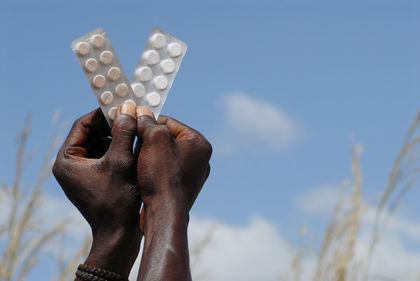Ethiopia - Health

The availability of modern health services has been greatly extended since 1960, but these services still reach only a small portion of the population. Free medical care for the needy was introduced in 1977; however, in 1993, only 55% of the population had access to health care services. Ethiopia built a new hospital at Gore and a 500-bed hospital in Harer was completed. The tuberculosis center in Addis Ababa was expanded and five new leprosariums were built in the provinces. Mental hospitals were built in Harer and Asmera and the one in Addis Ababa was renovated. As of 1999, there were fewer than 0.05 physicians per 1,000 people, and 0.2 hospital beds.
The wars, drought, political turmoil, and population pressures of the 1970s and early 1980s left their mark on the Ethiopian health situation. Between 1974 and 1992, there were 575,000 war-related deaths. Hundreds of thousands of Ethiopians died during a famine in 1973 and as many as 1 million may have died between 1983 and 1985. In 1990–98, only 4% of women used any form of contraception. The fertility rate in 2000 was 5.6. Average life expectancy in 2000 was estimated at only 42 years; infant mortality was estimated at 98 per 1,000 live births.
Widespread diseases include malaria, tuberculosis, syphilis, gonorrhea, leprosy, dysentery, and schistosomiasis. In 2000, 24% of the population had access to safe drinking water and 15% had adequate sanitation. In 1999, there were 373 reported cases of tuberculosis per 100,000 people. In 1997, Ethiopia made an effort to vaccinate children up to one year old against tuberculosis, 90%; diphtheria, pertussis, and tetanus, 63%; polio, 64%; and measles, 52%. As of 2000, an estimated 51% of all children under five years old were moderately or severely malnourished. Public health care expenditures in 1999 were estimated at 4.1% of GDP.
At the end of 2001 the number of people living with HIV/AIDS was estimated at 2.1 million (including 6.4% of the adult population) and deaths from AIDS that year were estimated at 160,000. HIV prevalence in 1999 was 10.63 per 100 adults as of 1999.
Ethiopia is one of several African countries in which female genital mutilation is performed. About 90% of all Ethiopian women undergo the ritual; in 1994 an estimated 23.9 million women had this procedure. No specific law in the country prohibits it.
Just What I Needed
For My School Project :)
THANKS.
Very very helpful. Need to do a school project.,
Verry helpful!
Just what i need for my school geography Global Inegualities assignment
and everything sounds bad
but that is exactly what i needed for school